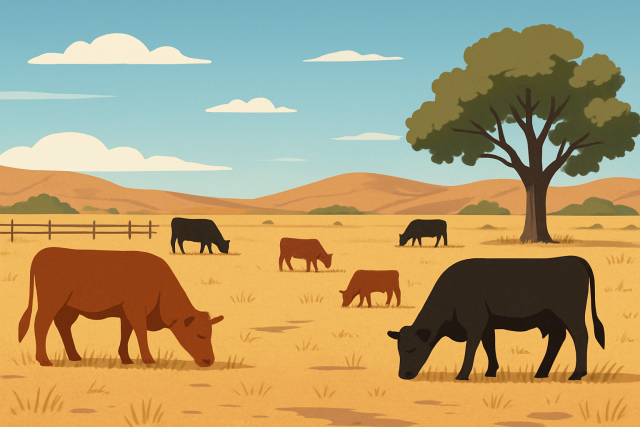Clover Benefits For Natural Weed Control And Soil Care

The clover benefits are rapidly earning their stripes as this plant becomes a flexible and eco-friendly choice for natural weed control and soil care, especially in the world of sustainable gardening and farming. It naturally holds its own against pesky weeds and boosts soil fertility at the same time, meaning gardeners can dial down their dependence on chemical herbicides and synthetic fertilizers. This double duty not only leads to healthier plants and better yields but also gives biodiversity and long-term soil health a much-needed leg up.
An Introduction to Clover and Its Unsung Role in Sustainable Agriculture
Clover species such as white clover, red clover and alsike clover are often the unsung heroes in farming and gardening circles. They bring solid ecological benefits to the table.
The Benefits of Using Clover for Natural Weed Control
When it comes to keeping your garden weed-free without reaching for the chemical arsenal, clover quietly shines as a green-thumb hero. Not only does it act as a natural weed suppressor, but it also brings a host of other perks that gardeners—whether novice or seasoned—can appreciate. From improving soil health to attracting pollinators, clover’s got more tricks up its sleeve than you might expect. Let us dig into why tossing a bit of clover into your planting mix might just be your garden’s new best friend.
Clover has a knack for keeping weeds in check by rapidly filling up any open soil space and throwing its weight around when it comes to nutrients and sunlight. This natural form of competition really chips away at the chances of those pesky invasive plants gaining a foothold and running wild.
- Clover quickly forms a dense ground cover that keeps pesky weed seedlings at bay.
- Its thick leafy canopy throws some shade over the soil, reducing the sunlight weeds need to sprout.
- Certain types of clover release natural compounds that slow the growth of nearby weeds like a gentle nudge saying, "Not so fast."
- Clover fixes nitrogen straight from the air and gives itself a solid boost that helps it compete against unwelcome weeds.
- Plus, clover’s roots dig deep and help stabilize the soil, making it harder for weed seeds to settle in.
Tossing clover into crop rotations or using it as a cover crop often brings noticeable drops in common weeds like crabgrass and dandelions. For example, trials on experimental farms have shown up to a 70% reduction in weed biomass in fields planted with red clover compared to bare fallow spots that look like they’ve given up. Lawns in urban and suburban areas seeded with white clover tend to stay lush and green and keep weeds pretty much in check.
"> "Ever since we began tossing white clover into our pastures, we have seen a noticeable drop in stubborn weeds and a real boost in forage quality, all without reaching for any synthetic chemicals. It’s been a game changer, honestly." – Sarah T., regenerative farmer
Benefits of Soil Care and Why Your Dirt Deserves a Little Love
Besides keeping weeds in check, clover does a fantastic job of boosting soil health by adding nutrients and improving the soil's texture. It also helps helpful microbes thrive.
Nitrogen-fixing bacteria work behind the scenes turning atmospheric nitrogen into forms plants can actually use, naturally giving the soil a well-deserved boost.
Biomass adds organic matter that acts like nature’s glue helping the soil stick together and hold onto moisture — a real lifesaver during dry spells.
Clover has a deep-rooted system and plays bodyguard against erosion by gripping the soil tight. This comes in especially handy on those pesky slopes.
Root channels act like tiny air vents improving soil aeration so plants and their microscopic buddies get just the right amount of oxygen.
It encourages a diverse and lively soil microbiome that generally keeps soil-borne diseases at bay and nutrient cycling buzzing along nicely.
Research has shown that soils previously planted with clover often boast higher nitrogen levels along with richer organic carbon content. This natural boost can chop reliance on synthetic nitrogen fertilizers by up to 40%, which is no small potatoes.

A thriving clover cover crop illustrating natural weed control and enhanced soil health in sustainable agriculture.
Handy Tips to Welcome Clover into Your Garden or Farm
Successfully integrating clover usually means choosing species that get along with your local climate and giving the soil proper prep. Timing your sowing just right helps those plants settle in comfortably.
- Pick clover species that suit your local climate and soil because this simple trick helps them thrive.
- Plant clover during cool or moist seasons since that is when they get a strong start and settle in well.
- Try growing clover alongside other crops through intercropping. It’s a win-win that makes the most of your land and keeps weeds at bay.
- Mow or trim clover regularly to keep things neat and encourage healthy growth while controlling seed dispersal.
- Monitor the soil pH and adjust it when needed so your clover stays healthy and ahead of weeds.
Including clover in crop rotations such as switching between cereals and clover cover crops often works wonders for boosting overall system sustainability. It’s like giving your soil a natural reset that helps keep pests at bay and pump up soil nutrients while disrupting weed cycles. Planting clover during the off-season as a cover crop is a smart move that keeps the soil healthy and prevents erosion like a cozy blanket for your land.
The Environmental and Economic Perks of Embracing Clover
Clover usually cuts down the need for synthetic herbicides and nitrogen fertilizers, which not only helps keep environmental pollution in check but also protects water quality and trims input costs.
| Parameter | Conventional Practices | Clover-Based Methods |
|---|---|---|
| Chemical Herbicide Use | Often involves frequent, heavy applications | Mostly avoided or used sparingly, keeping things a bit more natural |
| Synthetic Fertilizer | Relies heavily on nitrogen and phosphorus | Cuts nitrogen use by around 30 to 50 percent — a nice little saving that really adds up over time |
| Soil Health Indicators | Tends to show lower organic matter and more compaction | Generally boasts higher organic matter and a friendlier soil structure that plants seem to love |
| Weed Pressure | Typically moderate to high | Usually much better controlled, making life easier for growers and a bit tougher for weeds |
| Yield Stability | Can vary widely depending on inputs | Tends to be steadier with sustainable results — no rollercoaster rides here |
| Cost (per hectare) | Usually higher because of chemical inputs | Often lower thanks to nutrient cycling through more natural means, which feels good in the wallet too |
Economic case studies reveal that farmers who bring clover into their crop rotations or use it as a ground cover can often cut agrochemical costs by up to 20%, all while keeping yields steady or sometimes even giving them a little boost.
"\u003E "Incorporating clover into our farming systems has really helped cut down on input costs while giving a notable boost to soil health and biodiversity. From what I have seen, this method tends to promote more resilient and sustainable agriculture that stands the test of time." – Dr. Leonard Price, Environmental Scientist
Typical Challenges and How to Tackle Them Like a Pro
While clover benefits are numerous, growers often face challenges such as vulnerability to pests and the tricky task of establishing healthy stands in poor conditions. They also have to manage competition with main crops.
- Use integrated pest management to keep clover pests like root weevils and aphids in check. A little vigilance goes a long way.
- Prepare seedbeds thoroughly and opt for inoculated clover seed because it really helps the plants get off to a strong, healthy start.
- Keep a close eye on soil pH and adjust it to the sweet spot between 6.0 and 7.0 where clover tends to thrive best.
- When dry spells hit, don’t hesitate to water or mulch to give your clover some much-needed relief and keep stress at bay.
- Think carefully about your crop-clover combos to minimize competition and get the most out of your available resources. Sometimes a little planning saves a lot of hassle down the line.





